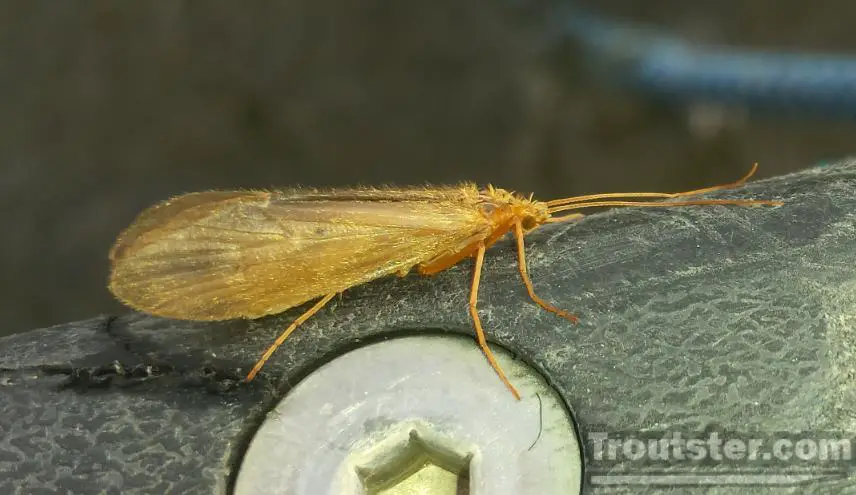This post was last updated on January 26th, 2015 at 07:35 pm
The Caddis Fly Life Cycle
 The Caddis Fly is a very widespread insect and is one of the most abundant in many trout streams. These tend to hatch in the later part of the day and in many cases will cause trout to begin feeding.
The Caddis Fly is a very widespread insect and is one of the most abundant in many trout streams. These tend to hatch in the later part of the day and in many cases will cause trout to begin feeding.
There are a few parts to the caddis fly life cycle:
- Egg
- Larva or Larvae
- Pupa or Pupae
- Adult
I will outline them here to give you a better understanding on why these are important for the fly fisherman to know and be able to identify.

Adult Caddis Fly
 The Adult Caddis fly is a great insect for the feeding trout. You will be able to easily identify this insect by its “tent shaped” wings. They somewhat resemble moths and are fairly closely related to them. They have long antennae and usually hatch nearly simultaneously on the river. The adult caddis fly will often times swim below the surface to lay its eggs directly on the bottom of the lake or stream. They take with them as they swim an air bubble, this will allow them to float quickly back to the surface after laying the eggs. They will also simply deposit their eggs on the surface of the water and allow them to survive on their own.
The Adult Caddis fly is a great insect for the feeding trout. You will be able to easily identify this insect by its “tent shaped” wings. They somewhat resemble moths and are fairly closely related to them. They have long antennae and usually hatch nearly simultaneously on the river. The adult caddis fly will often times swim below the surface to lay its eggs directly on the bottom of the lake or stream. They take with them as they swim an air bubble, this will allow them to float quickly back to the surface after laying the eggs. They will also simply deposit their eggs on the surface of the water and allow them to survive on their own.

Caddis Fly Larva

This larval stage of the caddis fly is on the bottom of the river year round, so I don’t need to tell you how important they likely are to your local trout population. This is the first stage after the egg hatches of the caddis fly. They will often encase themselves in silk and cover the sticky silk with debris such as sand, rocks and sticks. They will peek out the front end of their case in order to move about. You can see in the video below that they are often times quite active in this stage. Not all caddis fly larvae will use this case technique however. There are many species that will use no protection at all other than the rocks and boulders around them. They can commonly be found underneath rocks and logs in the bottom of the river.
Caddis Pupa

The caddis fly pupa is the final stage before the caddis becomes the adult. The larvae will often form small cocoon like structures and adhere them to the rocks at the bottom of rivers. It is here where they will “pupate” and prepare for adulthood. The caddis pupa look similar to the adult although they are covered in a protective membrane that will often make them appear to glisten. These pupa will shortly float to the surface of the water and become adults.


